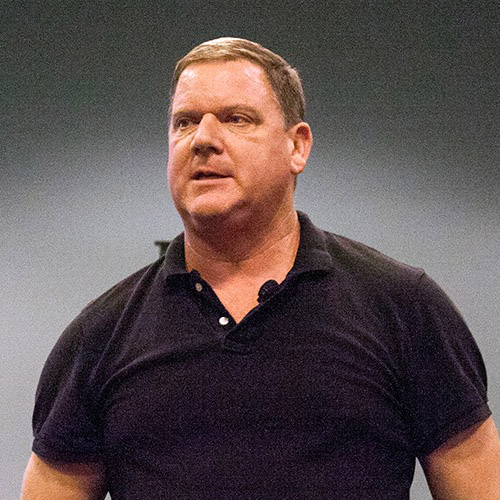Strength is, and remains, foundational

Strength and strength training should be part of the foundation of EVERY child’s academic life. I certainly insist that the child learn reading, writing, and arithmetic (as we used to say) as well as the basics of music, sciences, history, thinking, and a myriad of other topics. I think children should be taught classic games, including chess, and the basics of cooking, cleaning, and homelife.
So, yes: teach the children well (with a nod to Crosby, Stills, Nash and Young). But there is more. Let me explain my vision of an appropriate approach to physical education. As always, my solution begins with a rant.
One of the things that turns me off is going into a hotel (usually exhausted) and seeing a bunch of kids dressed in $1,000 uniforms and gear (“kit” for my European friends) sticking their fingers in the free breakfast buffet.
These kids belong to “elite” teams—and they’ll be the first to tell you that.
Mom and Dad write checks so Junior or Sissy can play. In my world, people pay my people to play…not the other way around. Mom and Dad are always convinced this elite team is their child’s ticket to education.
The ticket to free education is education. It’s doing well in classes, being involved, and pursuing the noble ideals of a liberal education: the education of a free person (not a mule). It’s writing and reading and creating.
If the parents simply took the money spent on these sports and buried it in a coffee can in the backyard, the child’s education fund would be much further ahead.
David Epstein’s book Range does a masterful job deciphering this for us. The 10,000-hour rule works ONLY in areas of instant feedback and the ability to clump (or cluster) patterns. This would be mastering classical instruments, chess, and golf. It doesn’t work in many other areas…if any.
Early specialization doesn’t consider the two real keys to sports success: genetics and geography—my summary of Epstein’s first book, The Sports Gene.
I was blessed as an athlete because my folks didn’t allow me to do organized sports outside of church ball. But I played sports probably six or seven hours a day. We didn’t hydrate; we drank out of a garden hose. We didn’t warm up because we were too busy playing. We cooled down when Mom yelled it was time for dinner or it got too dark.
Yes, I miss it.
What should our little ones be doing? First, let’s take a clue from George Herbert:
Pursuit: walk, run, crawl
Escape: climb, balance, jump, swim
Attack: throw, lift, fight
Herbert was a French Navy officer who helped with the survivors of a volcanic eruption. He noted that the survivors tended to have the ten qualities we see listed here. From this, he developed his system: “la méthode naturelle” (“Natural Method”). Herbert’s influence on physical education continues to this day.
As a personal aside, I always found it interesting that he died just weeks before I was born. As I have noted elsewhere, I had nothing to do with his demise!
Tim Anderson’s Original Strength is based, in part, on retraining this gap in most people’s lives. Playgrounds and swimming pools are the habitat of our future greats. Now, the “attack” options should probably have some training, but all we used in my early days of strength training was Ted William’s training manual and then just figured out the lifting for ourselves.
This “look at the picture method” is literally what everyone my age did for lifting education. My mom and dad both taught me to box, so maybe I had advantages others didn’t have. I miss my parents and the way kids used to be raised.
I have added two things to Herbert’s list, tumbling (break-falling) and riding a bicycle. I tell people this often: The most dangerous thing in the home for me is the floor or stairs. At my age, the floor is a killer. The lessons I learned in judo still protect me anytime I slip or snag something.
Bike riding? When I was at that Emergency Prep Conference and the speaker noted that you always need to be able to go 90 miles from your home no matter what the issue might be…from nuclear to biological to earthquake, she drilled in this idea that universally, 90 miles keeps you safe.
I always have basic bikes (no gears, coaster brakes) that can get me and my family 90 miles. We haven’t trained this challenge, but we can do it. We can carry them over fallen overpasses or whisk around rubble. With the 72-hour emergency backpack I keep next to my desk, we can, at least, get away. What happens next…well, I don’t want to think about that.
These are life lessons. Herbert’s list is difficult to learn later in life. But it’s all life-saving stuff.
And…a lot of fun.
Foundational training, from something as simple as calisthenics and proper sprint mechanics, can be taught easily to single-digit aged children. Push-ups, dips, chins, squats, back extensions, and sit-up variations as well as tumbling, crawling, climbing, and all forms of play are basic tools that will provide the brick and mortar to a lifetime of movement. As the child progresses, I suggest teaching the basic tools of the barbell including cleans, presses, squats, and deadlifts.
Along with appropriate discussions of nutrition, sleep, and hygiene, we can set the child on a lifetime of health, fitness, and performance (if desired).
Strength, as defined both by Herculean efforts and endurance feats, is not just for the superheroes and figures of mythology: Strength is, and remains, foundational.
Read the previous discourse in the series: It’s nice to have a Beowulf around to help

